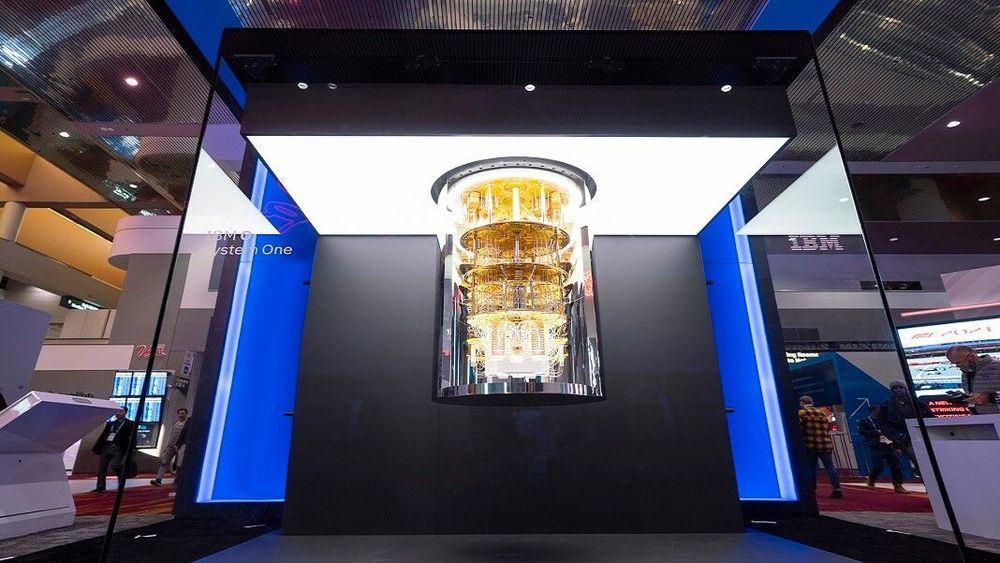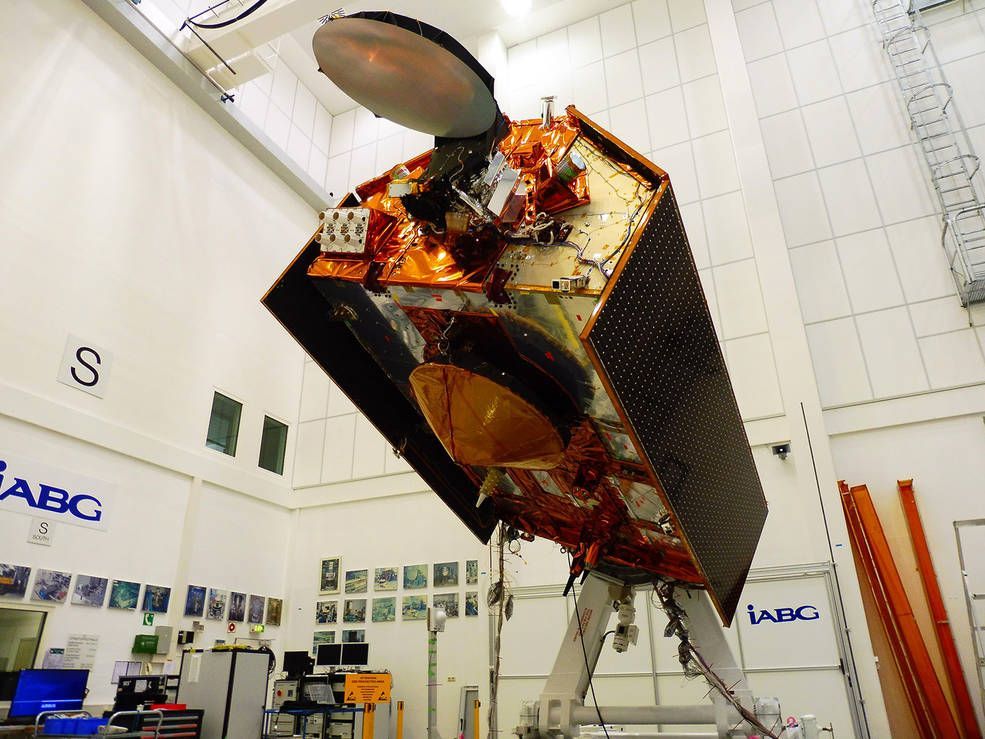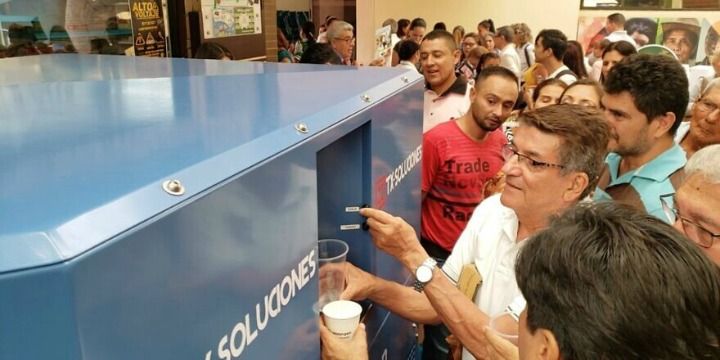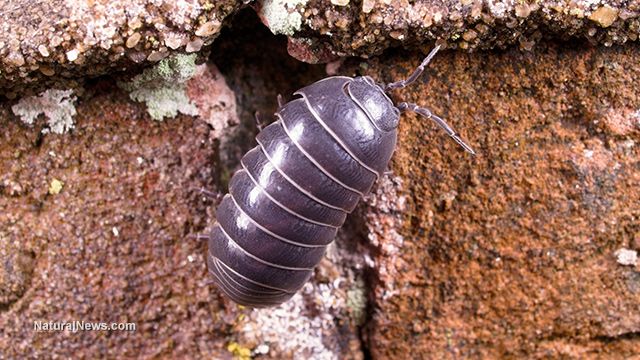Holly Jean Buck is a fellow at UCLA’s Institute of the Environment and Sustainability. This is an adapted excerpt from her upcoming book After Geoengineering: Climate Tragedy, Repair, and Restoration (September 2019, Verso Books).



Batteries are the key to decarboni z ing both transport and the grid, but today’s technology is still a long way from living up to this promise. IBM seems to have decided its computing chops are the key to solving the problem.
Lithium-ion batteries are still the gold standard technology in this field, and they’ve come a long way; 10 years ago they could just about get your iPod through the day, today they can power high-performance cars over hundreds of miles.
But if we want to reach a point w h ere batteries can outperform gasoline or store huge amounts of solar energy, we need some breakthroughs. So IBM has teamed up with Mercedes-Benz and its parent company Daimler to develop new batteries that could match up to our needs.


Residents of El Talento, a small town in Colombia adjacent to the city of Cúcuta, have been introduced to the GEN-M, Watergen’s medium-scale atmospheric generator that produces water out of air, October 2019. Photo: Courtesy.
JNS.org – An Israeli-made machine that creates fresh drinking water from air was named the “Energy Efficiency Product of the Year” in the 2020 Smart Home Mark of Excellence Awards at the Consumer Electronics Show (CES) in Las Vegas on Wednesday.
Presented annually during CES by the Consumer Technology Association, the Mark of Excellence Awards recognize the technology industry’s top smart-home innovations. The water-from-air appliance, named “GENNY,” was manufactured by the Rishon Letzion-based company Watergen.

(NaturalNews) Turn over a brick or a board that has been lying in the yard for a while and underneath you may find a collection of pill bugs scurrying about. Also known as “rollie pollies” or woodlice, these grey-colored creatures can be found in many dark, moist environments feeding on decaying matter. What’s interesting about these critters is that they are not bugs at all. They are crustaceans and more closely resemble crabs and shrimp, not insects. They are characterized by their ability to roll up into a ball when they feel threatened. Another unique feature is that they have seven pairs of legs. They also act like kangaroos, toting their eggs around with them in a special pouch called a marsupium, located on the pillbug’s underside. Even stranger, they don’t urinate. Instead, they exchange gases through gill-like structures.
Breeding or collecting pill bugs may be an important practice for homesteading and gardening. The guts of these pill bugs contain a number of microbes that help the critter feed on dead, organic matter. By releasing mass quantities of pill bugs into a mature garden, one can be assured that dead plant matter is being properly broken down and returned to healthy soil. Pill bugs literally speed up the process of decomposition. They circulate the soil. This can be very useful in composting. Treats for pill bugs include fungus and monocotyledonous leaves.
Pillbugs play an important role in the cycle of healthy plant life. They return organic matter to the soil so it can be digested further by fungi, protozoans and bacteria. This process produces a natural supply of nitrates, phosphates and other vital nutrients that plants need to thrive now and in future growing seasons. It is important not to introduce pill bugs into the garden too early, as they tend to munch on emerging plants. The grey soil workers often live up to three years.

“A new model based on the blood-vessel network in a rat brain shows that the vessel position within its circulatory network does not influence the blood flow nor how nutrients are transported. Instead, transport is controlled mostly by the dilation of vessels. As well as providing new insights into the circulatory system, the model could lead to better artificial tissues and brain-scanning techniques – and might even improve the performance of solar panels.”
Nutrient flow in the brain is controlled by blood-vessel dilation, reveals network model
If you enjoyed this article, please like and follow our Facebook page for the latest news on neuroscience, psychology, and artificial intelligence:
https://www.facebook.com/The-Neuro-Network-383136302314720/
New understanding of blood transport could lead to better solar panels.
Guardian of the Amazon! — Come hear the recent ideaXme (http://radioideaxme.com/) episode where we are joined by Ms. Nemonte Nenquimo, President of the Waorani Pastaza Organization, CONCONAWEP (Coordinating Council of the Waorani Nationality of Ecuador), following their recent landmark legal victory against the Ecuadorian government, leading to 500,000 acres of Amazon rainforest protected from oil drilling and timber companies (English voice over — Spanish audio link to be posted soon) — #Ideaxme #Amazon #Rainforest #Jungle #Ecuador #Waorani #Huaorani #Amerindian #Environment #Trees #Herbal #EthnoMedicine #Sustainability #Ayahuasca #ClimateChange #GretaThunberg #Health #Wellness #Longevity #Aging #IraPastor #Bioquark #Regenerage
Ira Pastor, ideaXme exponential health ambassador, interviews Ms. Nemonte Nenquimo, President of the Waorani Pastaza Organization (CONCONAWEP — Coordinating Council of the Waorani Nationality of Ecuador). This is an English language voice over of Ms Nenquimo’s audio interview.
Ira comments:
Today we have a fascinating guest joining us on the ideaXme show from a rather remote location, to discuss ethnomedicine, environmental conservation and protection, entheogens (the topic of bio-active plant substances for spiritual and religious practices), as well as the themes of bravery and perseverance.
Who Are the Waorani?


Combining Maxar’s capabilities in robotics, spacecraft and space systems operations creates the opportunity to deploy and maintain revolutionary new space architectures. Since the dawn of space exploration, pioneers in the field envisioned sustainable space stations enabled by in-space assembly, manufacturing and servicing. Wernher Von Braun conducted a detailed study in 1945 that defined the deployment and construction of the rotating wheel space station. The design included maintaining artificial gravity and oxygen levels. Today, NASA has led the construction and continuous operation of the International Space Station for over 20 years, demonstrating the technical feasibility of large-scale in-space assembly and servicing.
Recently, Maxar has been working with NASA on concepts for both human-tended and uncrewed sustainable space platforms. These in-space assembled structures provide basic functions and a modular interface for new and evolving payloads and missions. The lunar orbiting Gateway will be one such platform where the Maxar-developed Power and Propulsion Element will provide the foundation of power, maneuvering, communications systems and initial docking capabilities. Additional Gateway segments will plug-in to the Power and Propulsion Element to make use of these systems. The versatility of the Power and Propulsion Element also allows it to be refueled in orbit, and we are working with NASA to conceive the architecture that could resupply the Gateway with fuel and other essentials.
Another concept we’ve been developing with NASA is an uncrewed “science station” that is constructed in sun synchronous LEO orbit and features science instruments that are robotically installed, upgraded, and replaced over time. This allows for co-location of science instruments, which is often desired or necessary, while eliminating the need to budget for, develop, integrate and launch all the payloads simultaneously on a single launch.